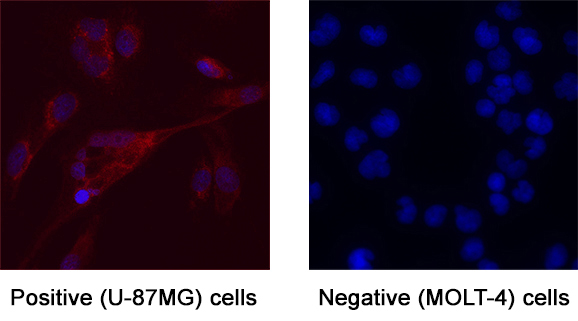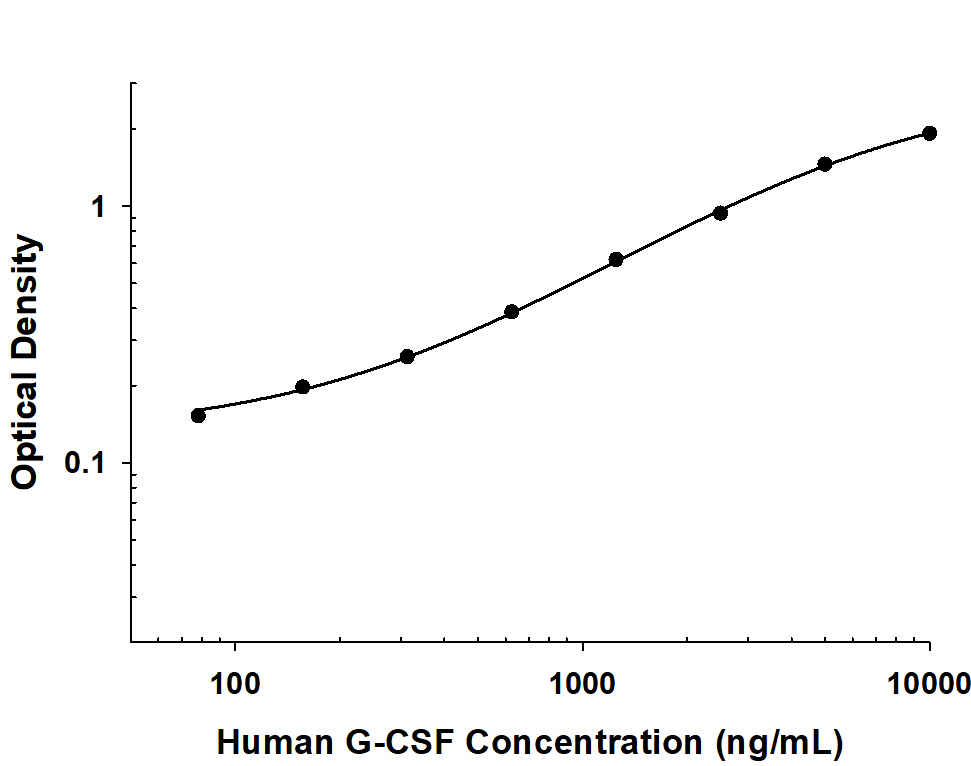Human G-CSF Antibody Summary
Thr31-Leu204
Accession # P09919
Applications
Please Note: Optimal dilutions should be determined by each laboratory for each application. General Protocols are available in the Technical Information section on our website.
Scientific Data
 View Larger
View Larger
Detection of G‑CSF in U‑87 MG (Positive) & MOLT‑4 (Negative). G‑CSF was detected in immersion fixed U‑87 MG human glioblastoma/astrocytoma cell line (Positive) & absent in MOLT‑4 human acute lymphoblastic leukemia cell line (Negative) using Mouse Anti-Human G‑CSF Monoclonal Antibody (Catalog # MAB2141) at 8 µg/mL for 3 hours at room temperature. Cells were stained using the NorthernLights™ 557-conjugated Anti-Mouse IgG Secondary Antibody (red; Catalog # NL007) and counterstained with DAPI (blue). Specific staining was localized to Cell surface and cytoplasm. View our protocol for Fluorescent ICC Staining of Cells on Coverslips.
 View Larger
View Larger
Human G‑CSF ELISA Standard Curve. Recombinant Human G‑CSF protein was serially diluted 2-fold and captured by Mouse Anti-Human G‑CSF Monoclonal Antibody (Catalog # MAB2141) coated on a Clear Polystyrene Microplate (Catalog # DY990). Mouse Anti-Human G‑CSF Monoclonal Antibody (MAB11296) was biotinylated and incubated with the protein captured on the plate. Detection of the standard curve was achieved by incubating Streptavidin-HRP (Catalog # DY998) followed by Substrate Solution (Catalog # DY999) and stopping the enzymatic reaction with Stop Solution (Catalog # DY994).
Reconstitution Calculator
Preparation and Storage
- 12 months from date of receipt, -20 to -70 °C as supplied.
- 1 month, 2 to 8 °C under sterile conditions after reconstitution.
- 6 months, -20 to -70 °C under sterile conditions after reconstitution.
Background: G-CSF
Product Datasheets
FAQs
No product specific FAQs exist for this product, however you may
View all Antibody FAQsReviews for Human G-CSF Antibody
There are currently no reviews for this product. Be the first to review Human G-CSF Antibody and earn rewards!
Have you used Human G-CSF Antibody?
Submit a review and receive an Amazon gift card.
$25/€18/£15/$25CAN/¥75 Yuan/¥2500 Yen for a review with an image
$10/€7/£6/$10 CAD/¥70 Yuan/¥1110 Yen for a review without an image


